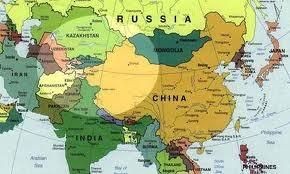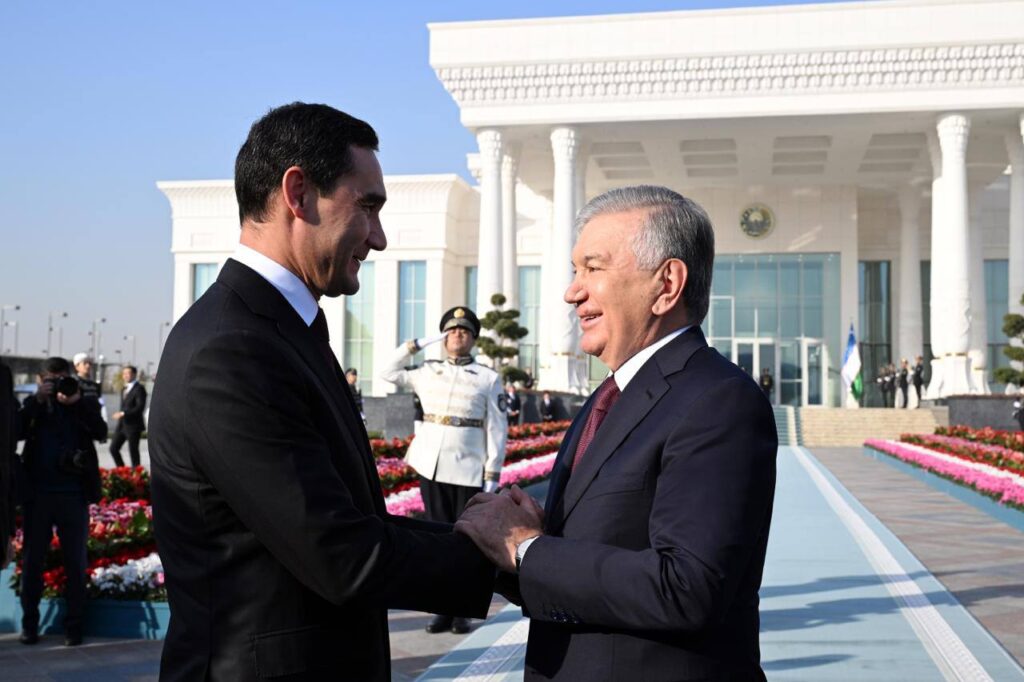BISHKEK (TCA) — Tourist facilities should be created in every Kyrgyz village where residents can participate in tourism promotion. The tourism sector should be profitable, consistently providing revenues to the state budget and creating additional jobs in the regions, Prime Minister of Kyrgyzstan Mukhammedkaly Abylgaziyev said on June 7 at a meeting to discuss the development concept of the newly created Kyrgyz Tourism State Enterprise.
Kyrgyzstan
“The share of tourism is about 12-13% of GDP in developed countries while it is 5% in Kyrgyzstan. We have to bring this figure to 7-8%,” Abylgaziyev said. To make the most efficient use of year-round tourism potential, it is necessary to introduce new business tools.
According to Kyrgyz Tourism Director Daniyar Kazakov, the enterprise plans to improve the activity of the state tourist facilities transferred to its management and develop priority projects in tourism.
Nothing new was said at the meeting. Problems in tourism have been regularly discussed for many years but still remain, and the main one is the poor infrastructure of tourist and recreational zones.
As many years ago, there are no roadside service facilities and specialized accommodation facilities for adventure tourists. There are no direct air routes connecting Kyrgyzstan with main tourist markets.
Even such a seemingly simple issue as the placement of road geographical signs in foreign languages has become a big problem. The Tourism Department recently launched a crowdfunding campaign in social networks “to raise funds from caring citizens to produce and install tourist signs.”
It is unlikely that another government structure will be able to cope with the problems accumulated over the years, experts say. MP Makhabat Mavlyanova believes that the country does not need the Kyrgyz Tourism state-owned company and advised to close it. Instead of allocating 50 million soms for creating the unnecessary organization, the state should spend this money for other more important goals, she added.
Doubtful statistics
The leadership of the Kyrgyz tourism department often boasts the successful results of last year when nearly seven million people visited Kyrgyzstan. This year they expect one million more visitors. These figures look even more impressive in comparison with 2017, when about 4.5 million people visited the country.
“If seven million tourists would come, Kyrgyzstan would bloom. These were not tourists but citizens who crossed the border,” said MP Iskhak Masaliev.
According to the State Border Service of Kyrgyzstan, this data include those who entered the country for tourist purposes, private visits and business trips, and the largest share was from Uzbekistan — 47.7% and Kazakhstan — 38.1%.
The number of citizens crossing the Kyrgyz-Uzbek border increased dramatically after the Dostuk checkpoint was opened in September 2017. Citizens of the two countries now do not need to obtain additional documents to cross the border. They mainly cross the border to visit their relatives, or they are traders.
According to the State Statistics Committee of Uzbekistan, 6.4 million foreign citizens visited the country in 2018. The agency clarifies that one person can be counted several times, and this is considered as a separate case.
According to tourism experts, the State Tourism Development Committee of Uzbekistan issues wishful thinking. By tourists, the agency has in mind all foreign nationals entering Uzbekistan. A huge increase is due to the abolition of the visa regime with Tajikistan and the opening of the border with Kyrgyzstan. Shuttle traders and ordinary people poured from the border areas into Uzbekistan.
During 2018, 1.7 million citizens of Tajikistan, 1.1 million citizens of Kyrgyzstan and 2.4 million Kazakhstanis visited Uzbekistan. Real tourists from the total number of foreign guests are less than 10%, experts believe.
Uzbekistan
After President Shavkat Mirziyoyev came to power in 2016, the authorities created conditions for independent and group tourism, including online registration, car rental, tourist police, electronic visas, etc. In the ranking of safe countries for individual tourism, Uzbekistan regularly occupies the high places.
The popularity of tourism destination grew due to the visa restrictions lifted for many countries in 2018. As a result of simplifying the procedure for obtaining an electronic visa, an Uzbek visa can now be obtained within two working days instead of several months earlier. The State provided benefits for investors creating the tourism infrastructure in the country.
However, the real influx of tourists does not occur, the local media report. Some tourists complained about difficulties with passport control when passing the border and the exchange of Uzbek soums for foreign currency.
According to cabar.asia, the state authorities count on the arrival of elderly wealthy Europeans and Asian tourists who need expensive hotels and organized leisure. The officials believe that local tourism is limited to ancient cities and national cuisine. Mountain clusters are undeveloped, and entertainment in the Kyzyl Kum desert is represented by camel riding and spending the night in yurts only.
There is a growing flow of young tourists learning about Uzbekistan from travel bloggers.
Uzbekistan is becoming more accessible thanks to a new system of electronic visas, more flights from Europe to Tashkent and high-speed rail connections from Tashkent to Samarkand and Bukhara.
Despite the country’s attractiveness due to its ancient historical sites, the tourism sector is performing below potential in part because of the lack of an efficient airline system that can bring tourists from around the world in a cost-effective and convenient manner, the World Bank press statement said.
According to Spot.uz, a working group on accelerated development of the tourism sector is developing measures to increase the efficiency of the national air carrier’s fleet, as well as attracting foreign airlines to increase the geography of regular and charter flights. To raise services at airports, it is planned to consider options for separating them into an independent structure transferring it to external investors’ management.
Tajikistan
President of Tajikistan Emomali Rahmon announced 2019-2021 the Years of Tourism and Folk Crafts Development. Last year was also devoted to tourism and folk crafts, thanks to which, according to official data, the influx of tourists into the country increased 2.5-fold. One year is not enough to achieve the goals set out in the Tourism Development Strategy until 2030, the President said.
According to the Tourism Development Committee under the Government of Tajikistan, over 1.1 million foreign tourists visited the country last year which is twice as many as in 2017. Income from tourism amounted to 214 million somoni ($22.7 million) in 2018, and the total investment was 120 million somoni ($12.7 million). About 150 tourism organizations now operate in Tajikistan.
Last year, the mountains of the Tajik Pamir and the Dushanbe — Kulyab — Khorog — Kulma international highway were included in the list of the 100 best places to visit for tourists. This region is listed among sustainable destinations for ecological tourism.
According to Sputnik Tajikistan, The Financial Times included Tajikistan in the list of eight countries recommended for tourists to visit in 2019.
Recently, a new obligatory payment was introduced in Tajikistan — a tax for tourists and pilgrims. A $1 tax for each day of stay will be imposed on tourists arriving in the country and Tajik citizens traveling to other countries through travel agencies, as well as Tajik pilgrims performing the hajj.
The innovation caused a flurry of critical comments in Tajik society, particularly in social networks, Asia-Plus reported. It is illogical to introduce a tourist tax if the country wants to develop its tourism industry, people say.
Tourist taxes are becoming increasingly commonplace. These funds are directed to the tourism industry and are used to provide travelers with more comfortable living conditions.
The matter is that this tax is applied in countries with highly developed tourism sectors.
Kazakhstan
The State Tourism Development Program of Kazakhstan until 2025 aims to improve the tourism infrastructure and remove bureaucratic barriers. It also provides for the simplification of visa and immigration laws and transport accessibility.
The program’s core are the top 10 projects, which include Lake Alakol, a ski resort in the Almaty region, Lake Balkhash, a beach resort at the Caspian Sea, etc. About 3.5 million tourists visit these tourism destinations annually and it is planned to increase their number to 13.5 million until 2025, Kursiv.kz reported.
According to tour operators, the number of foreign tourists in the mountains of Almaty has increased significantly over the last years. Tourists travel from all over the world to see natural sights.
The high tourist season is from mid-spring to mid-autumn. According to Kapital.kz, the country is well advertised as a summer vacation place, but winter in Kazakhstan is unknown. Foreigners go only to the ski resorts, while the potential is much higher.
Industry leaders hope that travel and business activity will increase with the introduction of the FlyArystan low-cost airline. On May 1, the Unity Day of Kazakhstan, FlyArystan made the first flight from Almaty to Nur-Sultan, Sputnik Kazakhstan reported.
A significant increase is expected in the passenger traffic, both in domestic and international destinations. Next year, new routes will be launched to popular tourist destinations — Lake Alakol in Kazakhstan and Issyk-Kul in Kyrgyzstan.
By the end of the year, FlyArystan plans to transport up to one million passengers.
Turkmenistan
The Turkmen State Committee on Tourism is tasked to develop international tourism as the most profitable direction of the tourism industry. To increase the number of foreign tourists, new tourist routes will be opened and the quality of services improved.
According to the Turkmen Foreign Ministry, trips to 105 historical monuments were organized and 30 more tourist routes to historical and cultural sights and holy places opened in 2018.
Three major historical and architectural sites — Kunyaurgench, Merv and Nisa — were included in the UNESCO World Heritage List. Each of them represents a huge cultural and scientific value, and they have long become favorite attractions for foreign visitors.
Turkmenistan was listed in the Guinness Book of Records several times. Ashgabat was recognized as the whitest marble city in the world, and the world’s largest handmade 301 square meter carpet was made in Turkmenistan.
Turkmenistan is considered the least popular for Muslim tourists in the region, ranking 51st among 130 countries in the Global Muslim Travel Index 2019.









